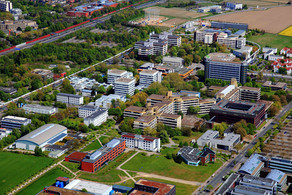Awards for Three International Projects
- TU News

Professor Tessa Flatten, Vice President International Affairs, was delighted that the Global Gallery was able to present initiatives from all status groups and from different departments at TU Dortmund University this year, too. “The projects presented are outstanding examples of best practices that underline TU Dortmund University’s openness as well as its international and intercultural orientation,” she said in her welcoming address at the International Meeting Centre (IBZ).
During a “Gallery Walk”, the many guests were able to learn about the 19 initiatives, talk to the people involved and cast two votes for their favorites. As Dr. Barbara Schneider, Director of the International Office, was keen to emphasize: “All the initiatives presented are excellent examples of the many international projects in research and teaching at TU Dortmund University.”
The three winning projects
The “Tandem Teaching Project: Afghanistan and the Arts” of the Academy in Exile (AiE) reaped the most votes of the evening. The Academy has been hosted at the Department of Cultural Studies since 2023 and supports researchers at risk in the shape of fellowships and scholarships. In view of the latest bans on Afghan women participating in education and research in their home country, AiE fellows organized a digital seminar for students at TU Dortmund University and from Afghanistan. The interdisciplinary seminar “Afghanistan and the Arts”, which is planned for the 2024/25 winter semester, will deal with human rights, the role of art in advancing women’s rights and Afghan photography in a global context, among other topics.
The second prize was awarded to a team from the Center for Higher Education (zhb) for its project “InterHEd – Intersectionality in Higher Education” funded within the EU’s Erasmus+ program. The aim of the project is to make universities and their teaching more inclusive and diverse by sensitizing stakeholders to the importance of intersectionality. To this end, the team, together with three European partner universities, is developing new methods to integrate people from different social groups into university teaching. In addition, InterHEd wants to foster an exchange of awareness-raising practices between universities.
Another €1,500 went to the Department of Spatial Planning’s project “Smart Urban Areas (SUA) – Sustainable System Solutions for Urban Development”, which is funded by the Federal Ministry for the Environment, Nature Conservation, Nuclear Safety and Consumer Protection (BMUV). In this pilot project, the Research Group of Spatial Information Management and Modelling (RIM) is investigating which measures are suitable for adapting urban buildings to climate change as well as for saving energy and water, using the example of a tower block in Hanoi. The SUA team is combining smart technologies with ecological principles to develop a model that can be transferred to other cities and shows how smart cities can also become sustainable green cities.




